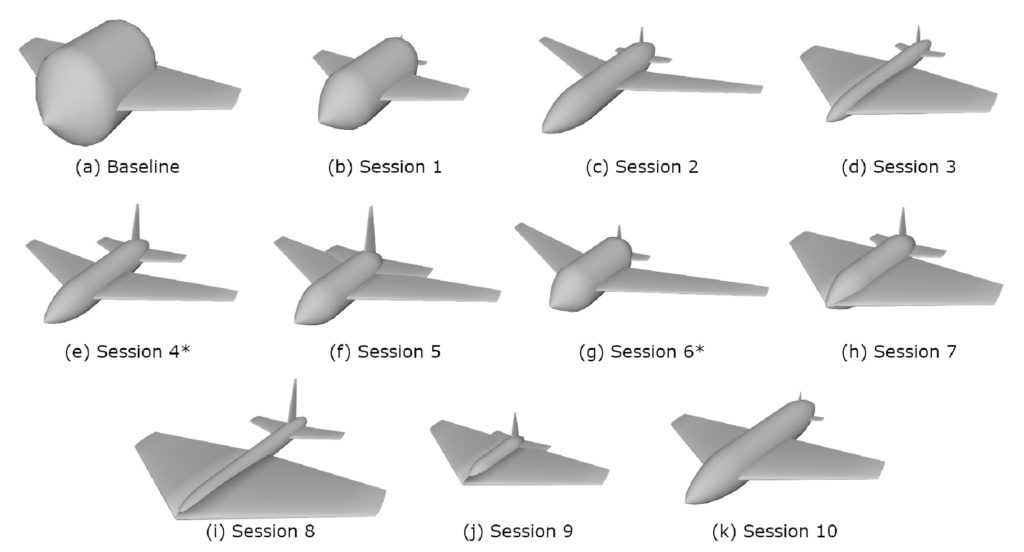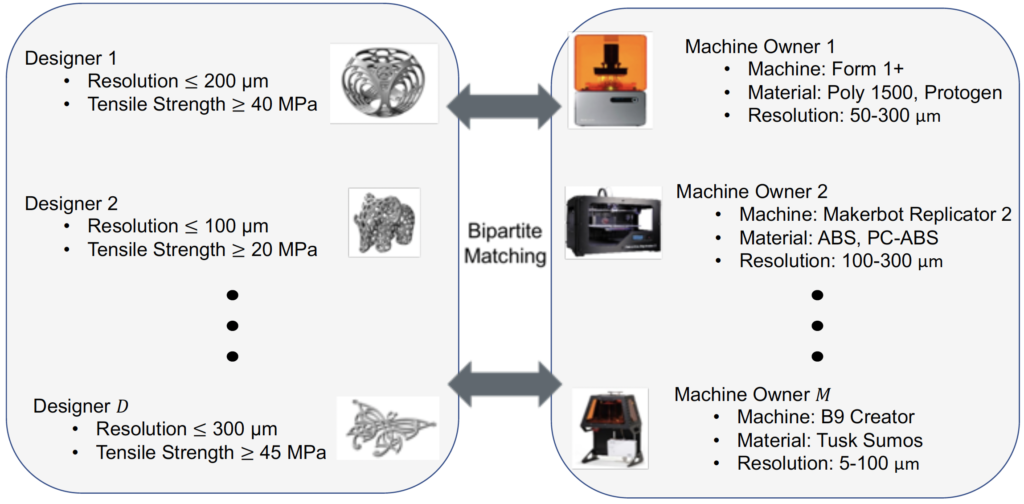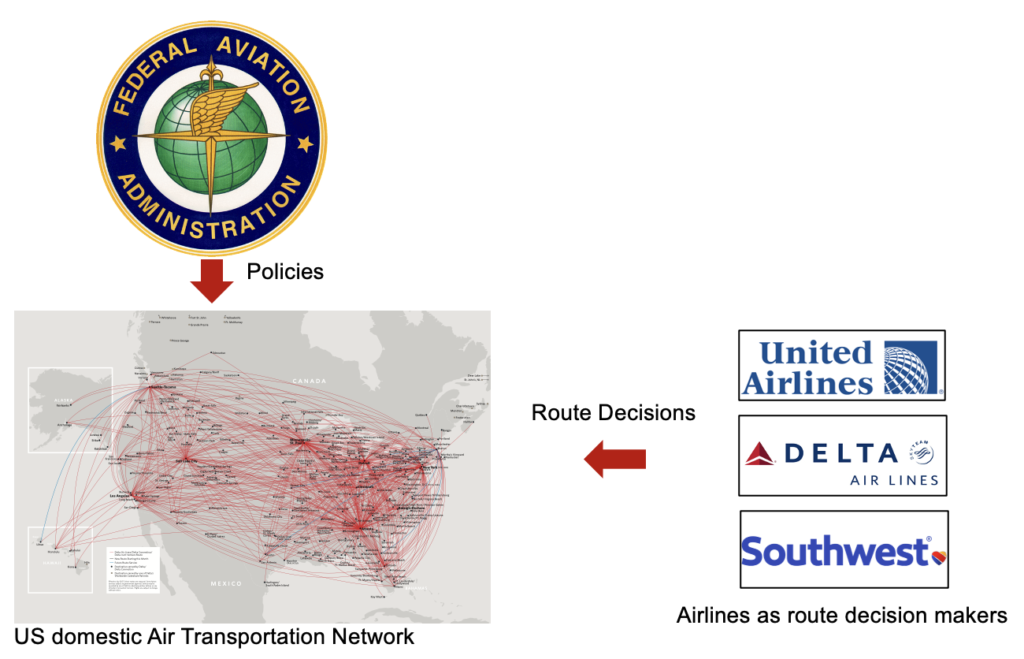Future Engineers as Augmented Teams
Sponsor: Lockheed Martin (Jan ’19 to Feb ’20)
The goal is to augment design activities using advanced information systems. We built a virtual web-based studio to design and analyze (CFD/FEA) aircraft. We tasked several teams of four designers, one designer responsible for one aircraft subsystem (e.g., propulsion, fuselage), to produce an aircraft that meets pre-defined mission requirements. The figure shows the final design from a few sessions. The information exchange data shows agile design methods, and state-history catalog improves efficiency.
Team: Dr. Paul Grogan (PI), James Laughland

Matching Markets: Resource Allocation in Cloud Manufacturing

Sponsor: Purdue University Mechanical Engineering Schaefer (PI – Dr. Jitesh Panchal)
The overarching goal of this project is to allocate service providers (such as machine owners) to service seekers (such as designers) in cloud-based design and manufacturing (CBDM). Each stakeholder in CBDM has its individual and often conflicting objectives. Machine owners need to maximize their machine utilization and profits, whereas designers need to get their parts printed with the desired material and resolution at the lowest possible price. A desirable resource allocation algorithm in CBDM must satisfy the preferences of all the agents. Conventional resource allocation algorithms are ineffective in CBDM as they focus on optimizing a set of global objectives. The project addresses this problem using a mechanism design approach where a bipartite matching framework models resource allocation. Deferred acceptance, top-trading cycles, and Munkres algorithms are optimal for resource allocation in fully decentralized, organizational, and monopolistic CBDM scenarios considering individual objectives of machine owners and designers.
AI-bolstered Social Network Interventions to Bolster Human Cognition in Teams
Sponsor: National Science Foundation (USA)
The project studies how to augment multi-team systems via machine learning bolstered social network interventions. Expected outcome: multi-modal graph neural models to diagnose poor team functioning metrics, and new design interventions under the framework of reinforcement learning, with states (team status), actions (interventions), and rewards (intervention outcomes) will improve team productivity and individual performance.
Team: Dr(s) Sinem Mollaoglu (PI), Kenneth Frank, Jiliang Tang, Richard P DeShon, Hanzhe Zhang
Evolutionary Dynamics of Complex Networks: Game-theoretic Foundation
This project established a foundational technique based on game theory for modeling and analyzing the evolutionary dynamics of complex networked systems. We showed that discrete games effectively model edge-level linking probability to predict network-level evolutionary dynamics of complex networks. We applied this model to US Air Transportation Network. We estimated the model parameters using historic route selection decisions using Bayesian sampling techniques. We achieved a prediction accuracy of 81.8 % and 89.2 % for two airlines during 2004-2014 (data from US Bureau of Transportation Statistics). Since our model is based on discrete games, it provides guidelines for policymakers to design policies that channel the network evolution towards targeted performance.
Team: Dr(s) Jitesh Panchal (PI), Dan DeLaurentis (co-PI), Zhenghui Sha, Kushal Moolchandani, Apoorv Maheshwari, Navindran Devandralingam
